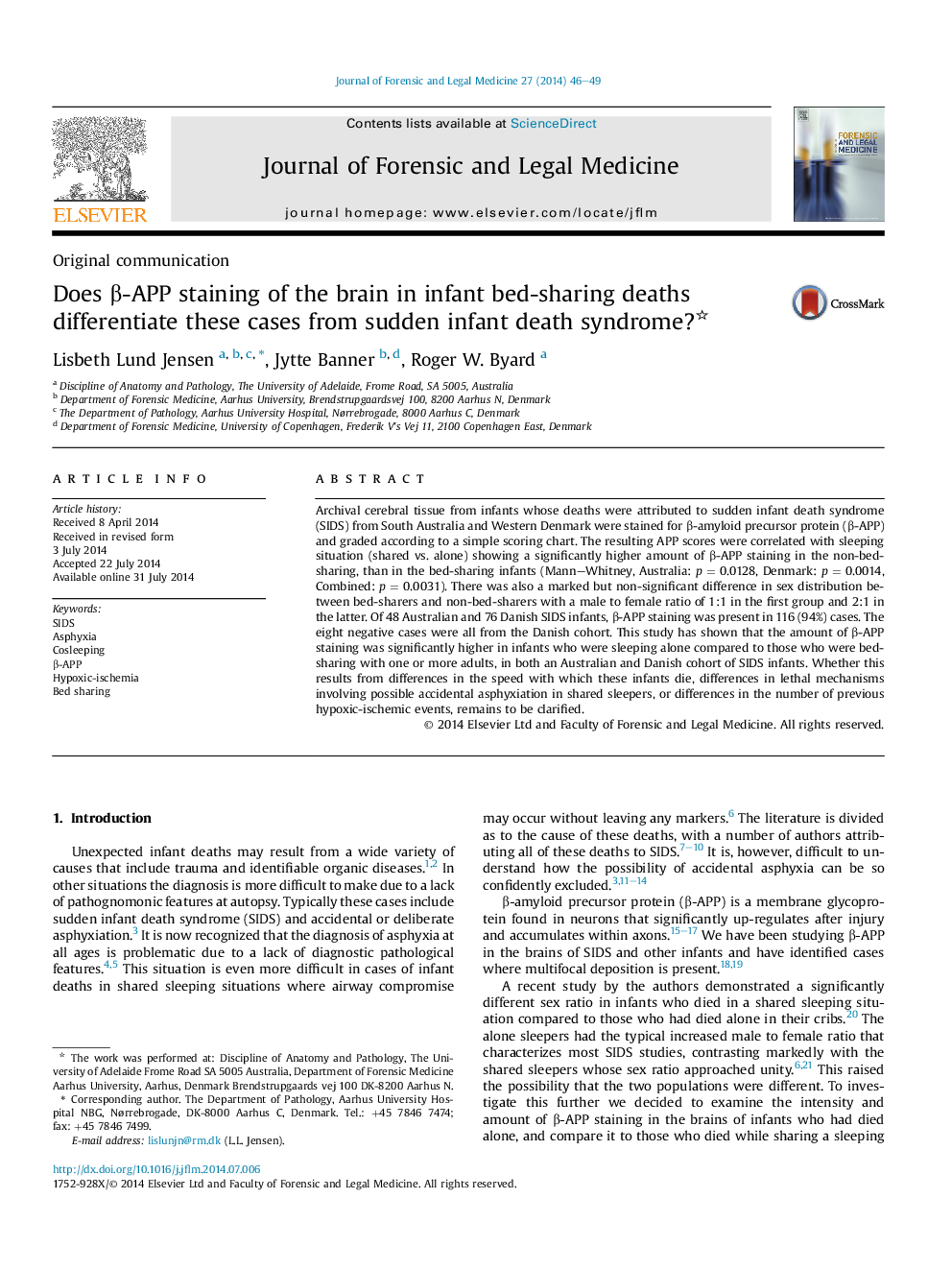| Article ID | Journal | Published Year | Pages | File Type |
|---|---|---|---|---|
| 101802 | Journal of Forensic and Legal Medicine | 2014 | 4 Pages |
•β-APP white matter staining was present in 116 (94%) of the included SIDS cases.•β-APP staining amount higher in bed-sharing compared to non-bed-sharing SIDS cases.•Results significant in a Danish as well as an Australian cohort of SIDS infants.
Archival cerebral tissue from infants whose deaths were attributed to sudden infant death syndrome (SIDS) from South Australia and Western Denmark were stained for β-amyloid precursor protein (β-APP) and graded according to a simple scoring chart. The resulting APP scores were correlated with sleeping situation (shared vs. alone) showing a significantly higher amount of β-APP staining in the non-bed-sharing, than in the bed-sharing infants (Mann–Whitney, Australia: p = 0.0128, Denmark: p = 0.0014, Combined: p = 0.0031). There was also a marked but non-significant difference in sex distribution between bed-sharers and non-bed-sharers with a male to female ratio of 1:1 in the first group and 2:1 in the latter. Of 48 Australian and 76 Danish SIDS infants, β-APP staining was present in 116 (94%) cases. The eight negative cases were all from the Danish cohort. This study has shown that the amount of β-APP staining was significantly higher in infants who were sleeping alone compared to those who were bed-sharing with one or more adults, in both an Australian and Danish cohort of SIDS infants. Whether this results from differences in the speed with which these infants die, differences in lethal mechanisms involving possible accidental asphyxiation in shared sleepers, or differences in the number of previous hypoxic-ischemic events, remains to be clarified.
